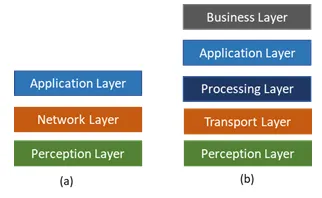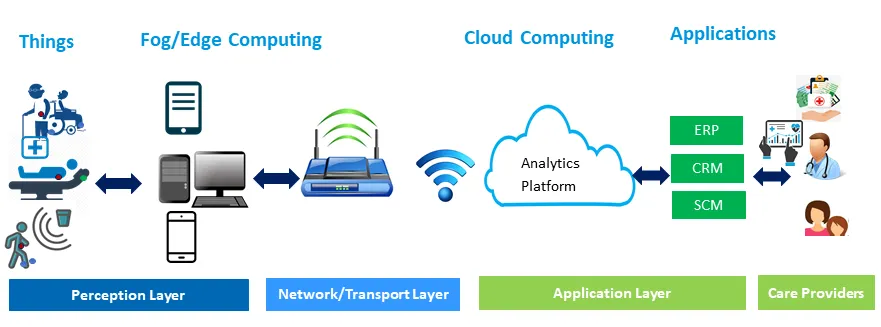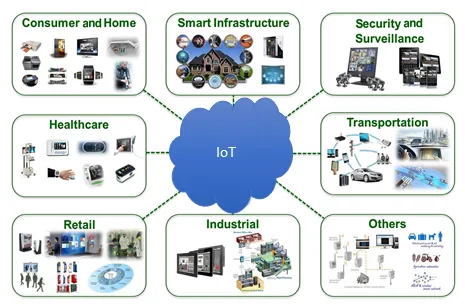
Hands-On Deep Learning for IoT
Train neural network models to develop intelligent IoT applications
Md. Rezaul Karim
- 308 pages
- English
- ePUB (mobile friendly)
- Available on iOS & Android
Hands-On Deep Learning for IoT
Train neural network models to develop intelligent IoT applications
Md. Rezaul Karim
About This Book
Implement popular deep learning techniques to make your IoT applications smarter
Key Features
- Understand how deep learning facilitates fast and accurate analytics in IoT
- Build intelligent voice and speech recognition apps in TensorFlow and Chainer
- Analyze IoT data for making automated decisions and efficient predictions
Book Description
Artificial Intelligence is growing quickly, which is driven by advancements in neural networks(NN) and deep learning (DL). With an increase in investments in smart cities, smart healthcare, and industrial Internet of Things (IoT), commercialization of IoT will soon be at peak in which massive amounts of data generated by IoT devices need to be processed at scale.
Hands-On Deep Learning for IoT will provide deeper insights into IoT data, which will start by introducing how DL fits into the context of making IoT applications smarter. It then covers how to build deep architectures using TensorFlow, Keras, and Chainer for IoT.
You'll learn how to train convolutional neural networks(CNN) to develop applications for image-based road faults detection and smart garbage separation, followed by implementing voice-initiated smart light control and home access mechanisms powered by recurrent neural networks(RNN).
You'll master IoT applications for indoor localization, predictive maintenance, and locating equipment in a large hospital using autoencoders, DeepFi, and LSTM networks. Furthermore, you'll learn IoT application development for healthcare with IoT security enhanced.
By the end of this book, you will have sufficient knowledge need to use deep learning efficiently to power your IoT-based applications for smarter decision making.
What you will learn
- Get acquainted with different neural network architectures and their suitability in IoT
- Understand how deep learning can improve the predictive power in your IoT solutions
- Capture and process streaming data for predictive maintenance
- Select optimal frameworks for image recognition and indoor localization
- Analyze voice data for speech recognition in IoT applications
- Develop deep learning-based IoT solutions for healthcare
- Enhance security in your IoT solutions
- Visualize analyzed data to uncover insights and perform accurate predictions
Who this book is for
If you're an IoT developer, data scientist, or deep learning enthusiast who wants to apply deep learning techniques to build smart IoT applications, this book is for you. Familiarity with machine learning, a basic understanding of the IoT concepts, and some experience in Python programming will help you get the most out of this book.
Frequently asked questions
Information
Section 1: IoT Ecosystems, Deep Learning Techniques, and Frameworks
- Chapter 1, End-to-End Life Cycle of IoT
- Chapter 2, Deep Learning Architectures for IoT
The End-to-End Life Cycle of the IoT
- The E2E life cycle of the IoT:
- IoT application domains:
- The importance of analytics in IoT
- The motivation to use DL in IoT data analytics
- IoT application domains:
- The key characteristics and requirements of IoT data
The E2E life cycle of the IoT

The three-layer E2E IoT life cycle
- The perception layer: This is the physical layer or sensing layer, which includes things or devices that have sensors to gather information about their environments. As shown in the following diagram, the perception layer of an E2E life cycle of the IoT solution in healthcare consists of patients, hospital beds, and wheelchairs that are deployed with sensors.
- The network layer: A network is responsible for connecting to other smart things, network devices, and servers. It is also responsible for transmitting and processing sensor data.
- The application layer: This layer is responsible for delivering application-specific services to users, based on the data from the sensor. It defines various applications in which IoT can be deployed, for example, smart homes, smart cities, and connected health.

The five-layer IoT E2E life cycle
- The transport layer: This is similar to the network layer of the three-layer life cycle. It transfers the data gathered in the perception layer to the processing layer and vice versa through networks such as wireless, 3G, LAN, Bluetooth, RFID, and NFC.
- The processing layer: This is also known as the middleware layer. It stores, analyzes, and processes huge amounts of data that comes from the transport layer. It can manage and provide a diverse set of services to the lower layers. It employs many technologies, such as databases, cloud computing, and big data processing modules.
- The business layer: This layer manages the whole IoT system, including applications, business and profit models, and user privacy.
IoT system architectures


IoT application domains

- Factories or industries, including operation management and predictive maintenance
- Cities, including public safety, health, traffic control, and resource management
- Healthcare, including monitoring and managing illnesses and improving wellness
- Retail, including self-checkouts and inventory management
- Energy, including the smart grid